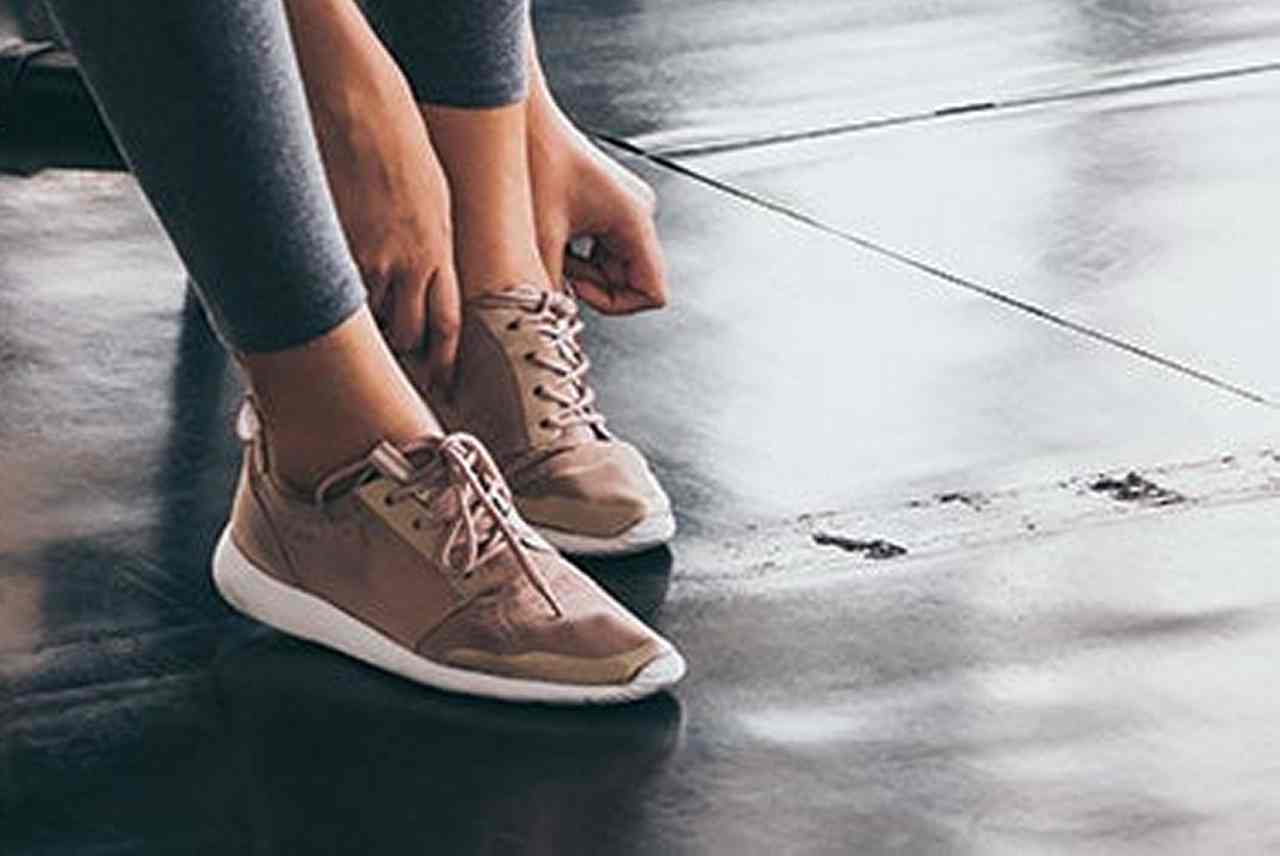We spend a whole lot of time researching the right sneakers for our sport — whether or not or not it’s operating, CrossFit or power coaching — ensuring that they match simply so and that they supply optimum help and carry out properly throughout exercise. However as soon as afoot, your sneakers are solely good if they’re comfy, and the way you lace them up could make or break your exercise expertise.
“Frequent issues with shoe dysfunction throughout coaching can typically be fastened with easy modifications to lacing,” says Jason Havey, DPM, chief resident of podiatric surgical procedure at Hennepin County Medical Middle in Minneapolis. And whereas the tightness of a shoe is commonly a matter of desire, the final rule of thumb, in keeping with Havey, is {that a} shoe ought to be “comfortably cosy”: Your foot shouldn’t be in a position to transfer round, however there additionally shouldn’t be any discomfort.
Listed here are some widespread points you would possibly encounter along with your footwear and the lacing methods to resolve them.
ISSUE: Black toenails or Morton’s toe
Some runners declare that except you’ve gotten black toenails, you’re not legit. Fact be instructed, disgusting, lifeless nails will not be a badge of honor. “In case your sneakers are too tight or slender, your toes will hit the entrance of the shoe with each step, resulting in toenail issues,” Havey says. Additionally, folks whose second toe is genetically longer than the others — referred to as Morton’s toe — can have the identical points with their toes regularly hanging the entrance of the toe field. Use this lacing approach to carry the toe field, creating room and stopping the shoe from urgent down in your nails and toes.
SOLUTION: Toe-box reduction lacing
Fully take away the lace from the shoe. Thread one finish down by way of the eyelet on the aspect nearest your large toe, then carry it diagonally up and throughout, pulling it up by way of the highest eyelet on the other aspect. Depart sufficient lace so that you could progressively weave the opposite finish forwards and backwards as much as the highest of the shoe.
ISSUE: Scorching spots, numbness and/or tingling on high of the foot
The very last thing you need to have occur throughout a race or exercise is to have your ft go to sleep or get a blister the place your shoe rubs or presses down in your foot. “Excessive-arched people or these with a excessive instep are susceptible to nerve irritation throughout the highest of the foot,” Havey says. “The downward stress of the laces on the bones of the midfoot can irritate the nerves within the space.” Use this system to alleviate this top-heavy stress and forestall irritation of nerves and/or pores and skin.
SOLUTION: Strain-relief lacing
Determine the place you’re feeling the stress or the place the shoe is rubbing, then unlace the shoe to some extent slightly below that spot. Thread the laces vertically up the edges of the shoe, going as excessive as wanted till you’re above the recent spot, then resume your regular diagonal lacing to the highest.
ISSUE: Footwear too free/slender ft
Simply as it’s troublesome for these with vast ft to discover a comfortably becoming shoe, so it’s a problem for these with slender ft to get correctly outfitted. “In case your sneakers are too free, your foot could slide round inside, inflicting uncomfortable friction and blisters,” says Havey, including that you just additionally might twist an ankle. This method cinches up the shoe from backside to high, conserving your foot in place to forestall accidents.
SOLUTION: Slim-foot lock lacing
Thread your laces as you’ll usually by way of the primary and second eyelets. Then thread the laces down by way of the following eyelets up on the identical aspect to create a lock. Now cross the laces again over and weave them underneath the lock. Proceed this lace-lock sample all the way in which to the highest of the shoe.
ISSUE: Heel slippage
When you’ve ever questioned what that “additional” eyelet on the high of your shoe is for, you’re about to search out out: “Use the eyelets closest to your ankle joint to cease your heel from slipping or lifting,” Havey says. This often happens if in case you have slender ankles or heels or in case your shoe is somewhat too large. Slippage can result in blisters, scorching spots or perhaps a twisted ankle, so use this lacing approach to safe your heel into place.
SOLUTION: Lock lacing
Lace your shoe as you’ll usually all the way in which to the highest. Then thread the laces down by way of these “additional” eyelets closest to your ankles and pull them by way of till there’s a small loop remaining. Cross the laces over and thru the loops on reverse sides and pull to tighten and lock down.
ISSUE: Broad forefoot or pinched toes
Having a large forefoot can spell a good squeeze with many shoe manufacturers, even when they’re designed for wider appendages. This may imply undue stress and blisters in your large and/or pinkie toes or a pinching collectively of your toes, which may result in impingement over time. This lacing approach releases a number of the stress throughout the entrance of the shoe, creating extra space in your foot to unfold out.
SOLUTION: Broad-foot lacing
Thread the laces down by way of the primary eyelets on both aspect, up by way of the second eyelets on the identical aspect, then down by way of the third eyelets on the identical aspect. Now lace diagonally as you’ll usually to the highest.

